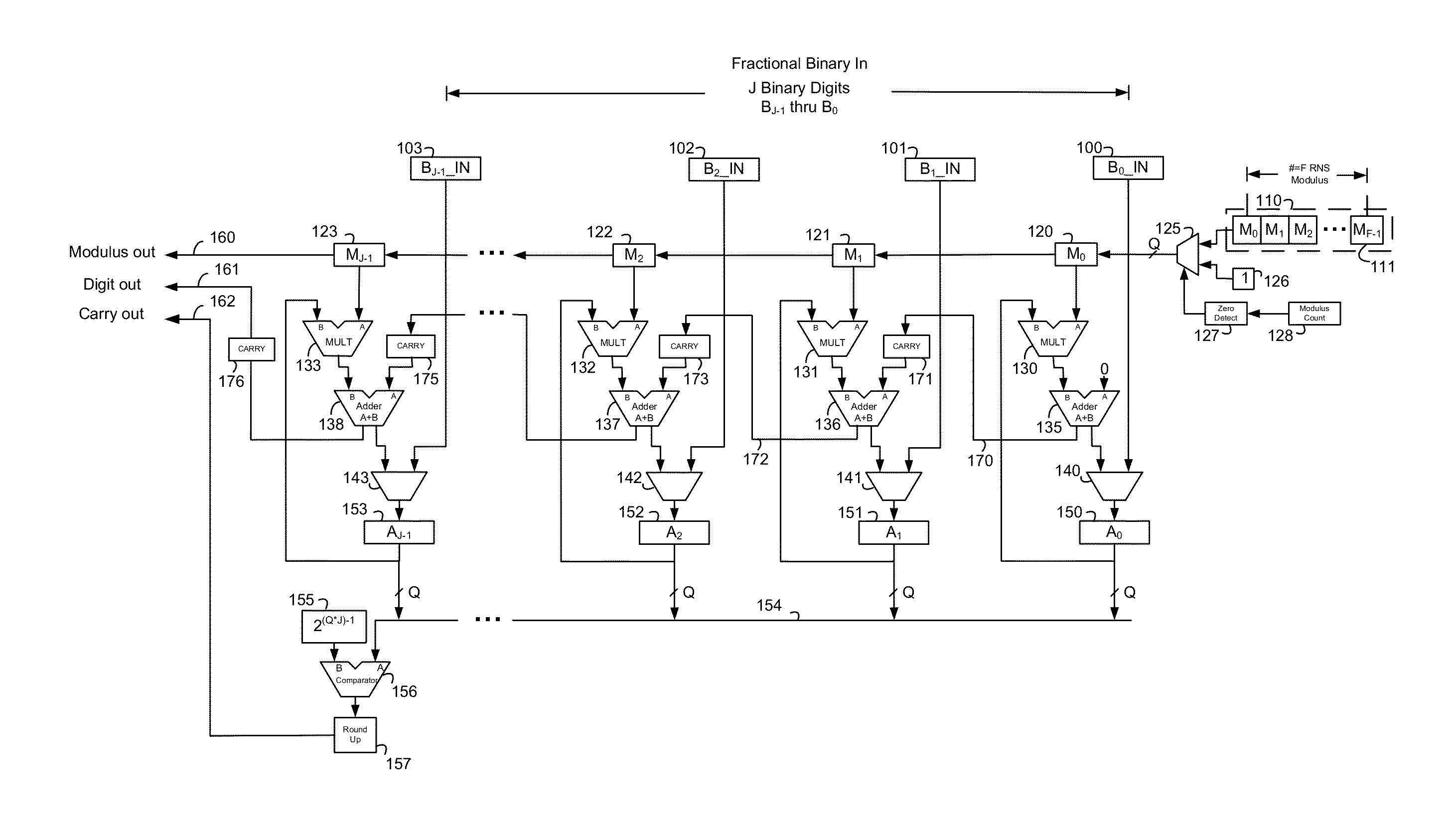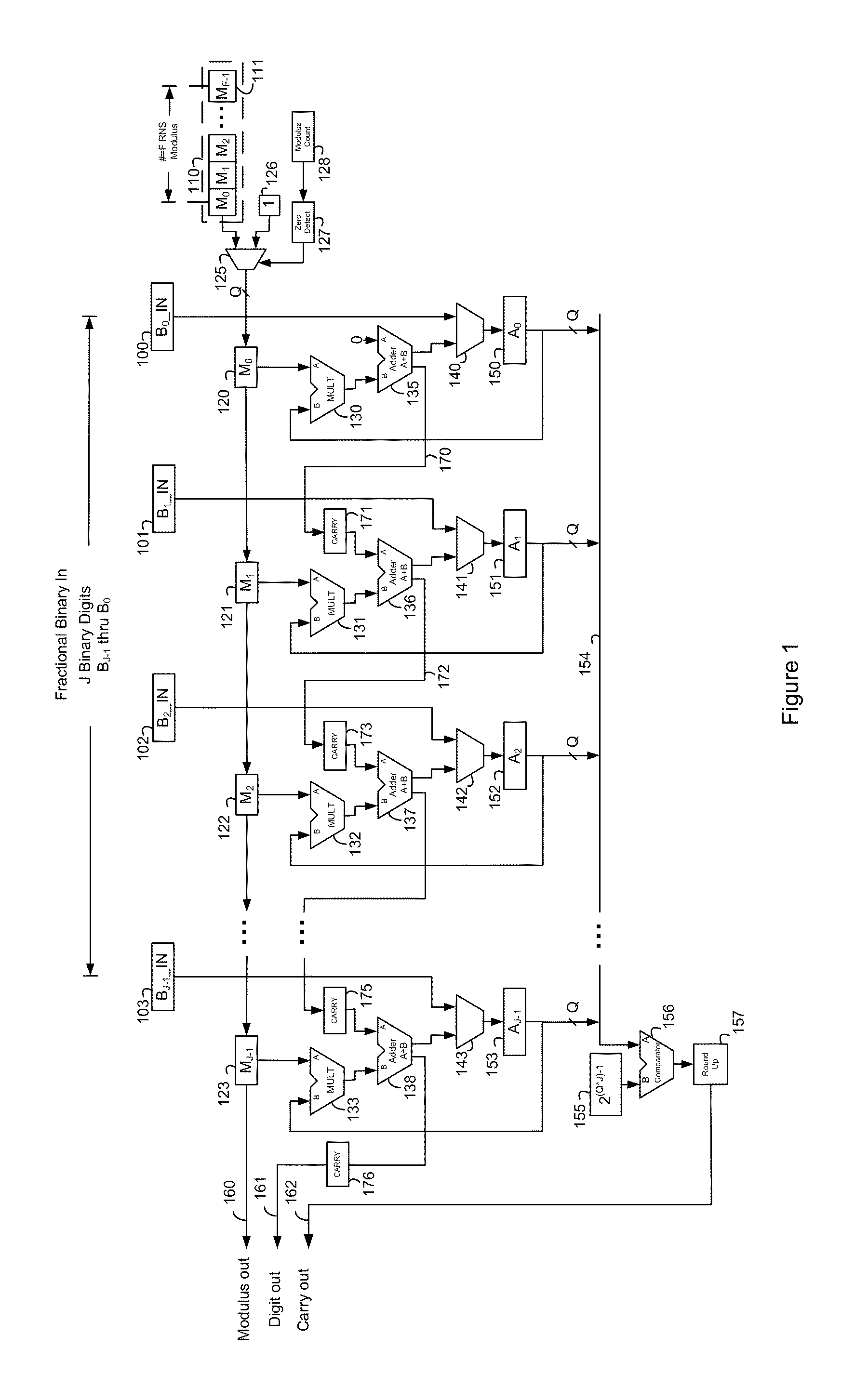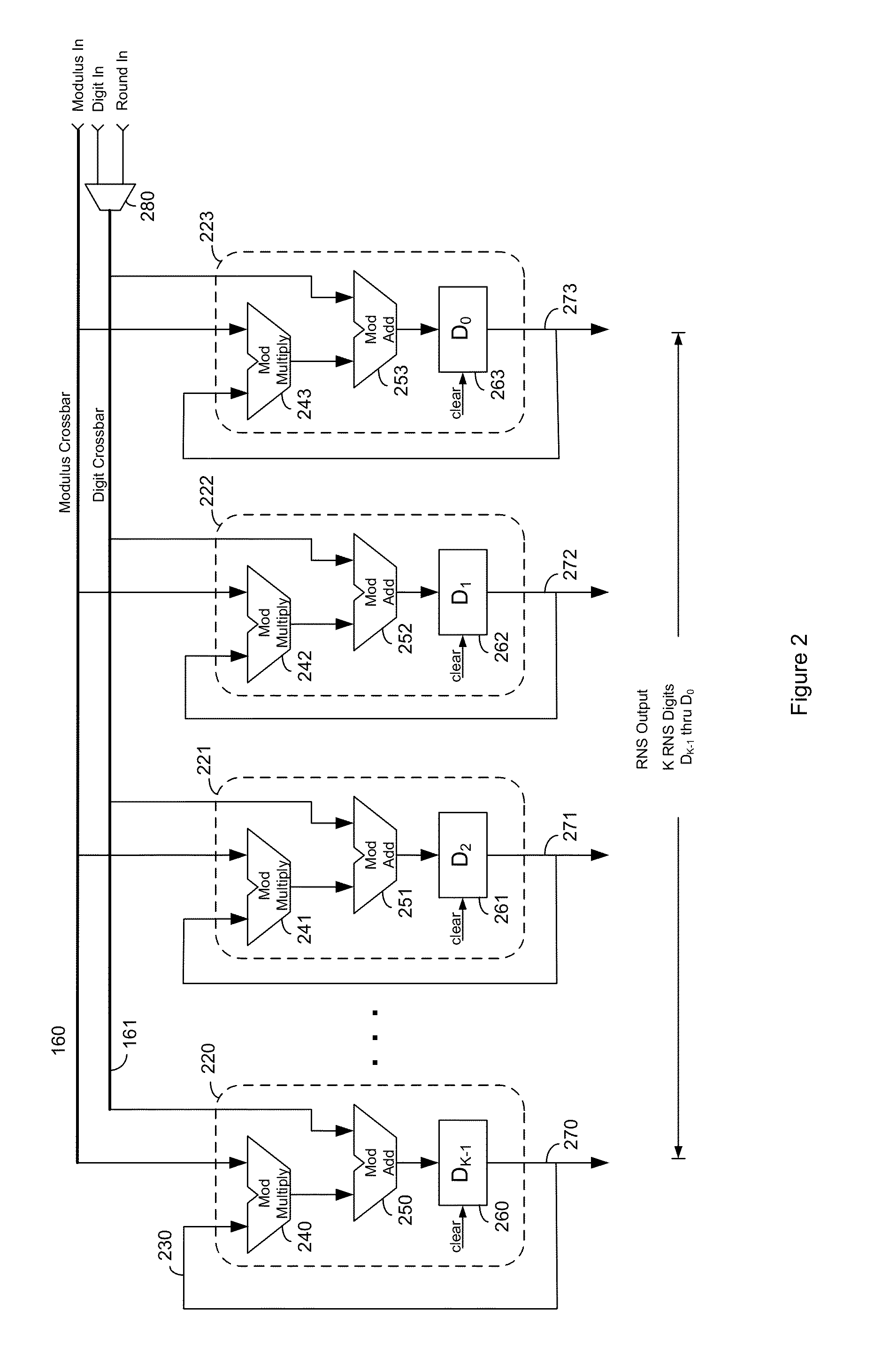System and method for improved fractional binary to fractional residue converter and multipler
a technology of fractional residue and conversion system, applied in the field of general purpose arithmetic logic units, can solve problems such as finite size of real computers, manipulation and processing of very large numbers, and difficult processing of binary computers and floating point units
- Summary
- Abstract
- Description
- Claims
- Application Information
AI Technical Summary
Benefits of technology
Problems solved by technology
Method used
Image
Examples
Embodiment Construction
1. Improved Fractional Binary to Fractional Residue Converter Apparatus.
[0050]In order to take advantage of high speed operation of the RNS ALU, high speed conversion of integer and fractional data, from binary to residue format, is required. FIG. 1 and FIG. 2 disclose a streamlined version of the conversion apparatus described in U.S. Patent Publication No. 2013 / 0311532, which is incorporated herein by reference. The streamlined apparatus requires less clock cycles for the conversion process, therefore, it is generally faster.
[0051]FIG. 1 and FIG. 2 illustrate a J+K digit converter apparatus of the present invention by means of example. FIG. 1 discloses a first plurality of J binary digit stages, and FIG. 2 discloses a second plurality of K number of RNS digit stages. The converter is an enhanced version of the forward fractional converter of U.S. patent application Ser. No. 13 / 475,979.
[0052]The apparatus accepts a fractional only binary value into the B_IN port shown at top of FIG...
PUM
 Login to View More
Login to View More Abstract
Description
Claims
Application Information
 Login to View More
Login to View More - R&D
- Intellectual Property
- Life Sciences
- Materials
- Tech Scout
- Unparalleled Data Quality
- Higher Quality Content
- 60% Fewer Hallucinations
Browse by: Latest US Patents, China's latest patents, Technical Efficacy Thesaurus, Application Domain, Technology Topic, Popular Technical Reports.
© 2025 PatSnap. All rights reserved.Legal|Privacy policy|Modern Slavery Act Transparency Statement|Sitemap|About US| Contact US: help@patsnap.com



